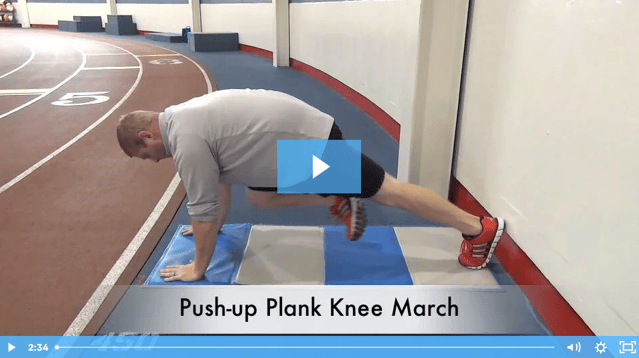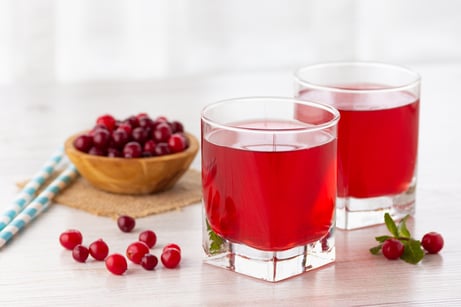 The plank series needs no equipment, only a wall (if you make it that far). Attempt to complete the plank series in order. Complete the plank progressive series on the days you work out at the end of your workout. If you are x2 days in a row successful and have perfect technique with the exercise, move on to the next progressive variation. You will see that the traditional plank is repeated multiple times and we will add time as you progress along over break. You do not need to do more than what is asked of you. It will be easy at first, but trust me: it gets harder by the end.
The plank series needs no equipment, only a wall (if you make it that far). Attempt to complete the plank series in order. Complete the plank progressive series on the days you work out at the end of your workout. If you are x2 days in a row successful and have perfect technique with the exercise, move on to the next progressive variation. You will see that the traditional plank is repeated multiple times and we will add time as you progress along over break. You do not need to do more than what is asked of you. It will be easy at first, but trust me: it gets harder by the end.
Step 1: Build Awareness
The dowel is placed along the spine and is kept in contact with three points: back of the head (not the top), thoracic region (between shoulder blades), and the sacrum (tailbone). This forces you to understand and become aware of proper alignment. Essentially, the dowel serves as your coach. If it rolls off or wobbles, you aren’t in good alignment.
Additionally, the quadruped position is great to begin to develop awareness of optimal alignment because it takes most of the load off the system while still keeping the torso in a very similar position to the abs plank.
Once you can hold optimal position for 30 seconds, move on to step 2.
Step 2: Lengthen the Lever Arm
The straight-arm plank is essentially a static hold in push-up position. This takes what we learned in step 1 and adds in some load due to the increased length in the lever arm. The load on the abs here is not as great as on the elbows.
If you cannot hold optimal alignment for 30 seconds, keep working here until you can. If you can maintain optimal alignment without disturbing the dowel, you are ready to move on to step 3.
As I stated above, the elbow plank with dowel increases the load on the torso even further over the straight-arm variation. In other words, it demands more strength and control of optimal alignment.
Step 3: Elbow Plank
Once you can hold this position for at least 30 seconds without much fatigue, you are ready to move on to the advanced progressions that I’ve laid out below.
If you cannot, remain here at level three until you can achieve a 30-second hold without too much fatigue.
Keep in mind that just because you are doing planks, it doesn’t mean that you can do them correctly. The dowel is a simple method of telling you how good your planks really are.
Once you’ve mastered the basic plank with the dowel, you no longer need to use the dowel.
Plank Progressions
Now that you understand what is required to perform an optimal fundamental plank, I can show you the complete progression spectrum from beginner to advanced planks. Once you can maintain optimal alignment here for required times, move on to the next level.
|
Level |
Plank Progression Exercise |
Sets & Time |
Notes |
| 1 |
Half-Kneeling Elbow Plank |
2x1min |
On knees & elbows |
| 2 |
Traditional Plank |
2x :45 sec |
On elbows & toes |
| 3 |
Push-up Plank |
2x :45 sec |
Push-up position |
| 4 |
Plank w/ Leg Lift |
2x :20 sec |
Push-up position |
| 5 |
Plank w/ Arm Lift |
2x :20 sec |
Push-up position |
| 6 |
Half-Kneeling Side Elbow Plank |
2x1min (R/L) |
On knee & elbow, hip up, x1 min—R/L |
| 7 |
Elbow Side Plank |
2x :45 sec |
On elbow & foot |
| 8 |
Up/Down Plank |
2x :30 sec |
Alternating elbow plank to push-up plank continuously |
| 9 |
Decline Plank |
2x :45 sec |
On elbows & toes with feet elevated |
| 10 |
Plank w/Knee to Chest (March) |
2x1 min total |
Pull knee up to chest & alt R/L every 10-15 secs |
| 11 |
Side Plank w/ Knee to Chest (March) |
2x1 min total |
Pull knee up to chest & alt R/L side after 30 secs |
| 12 |
Side Plank w/ Leg Abduction |
2x1 min total |
Leg straight and extended upward & alt R/L side after 30 secs |
| 13 |
Bird-Dog Static Plank |
2x:30 sec |
Push-up position, bring opposite elbow to knee touching underneath hips and hold (R/L) |
| 14 |
Bird-Dog Active Plank |
2x:30 sec |
Push-up position, bring opposite elbow to knee touching underneath hips and then actively extend same arm/leg out and back to touching (R/L) & repeat |
| 15 |
1-Arm Rotating Plank to Side Plank |
2x:30 sec |
Starting a traditional plank, take one arm/hand and reach for opposite armpit. Then actively rotate to a side plank and extend the arm to the sky & rotate back to plank (R/L) & repeat |
| 16 |
Wall Plank |
On elbows & toes—feet against the wall & elevated |
|
| 17 |
Wall Plank w/ Knee to Chest (March) |
2x 1 min total |
Feet on wall—pull knee up to chest & Alt R/L every 10-15 secs |
| 18 |
Wall Plank w/ Bird-Dog Static Plank |
2x :30sec |
Feet on wall—push-up position, bring opposite elbow to knee touching underneath hips and hold (R/L) |
This blog was written by Michael Blume, MS, SCCC; Athletic Performance Coach. To learn more about the NIFS bloggers, click here.



 Think about some top goals you have. Maybe your top goal is to
Think about some top goals you have. Maybe your top goal is to  With the sport of powerlifting taking off in the last couple of years, more and more people are taking up the sport as a hobby and to improve their overall fitness levels. Training to improve strength in the squat, bench, and deadlift is a great way to improve total body strength and improve body composition.
With the sport of powerlifting taking off in the last couple of years, more and more people are taking up the sport as a hobby and to improve their overall fitness levels. Training to improve strength in the squat, bench, and deadlift is a great way to improve total body strength and improve body composition. 
 The traditional bodybuilding split of working one muscle group per day might work for the dedicated, high-level competitive bodybuilder who makes their living in the gym. But for the general population only looking to shed some unwanted pounds and improve their overall health, the traditional bodybuilding split is not ideal. Working multiple muscle groups in the same session is much more ideal because it ramps up the body’s metabolism more than working a single muscle group each day. To achieve this, we train the movement, not the muscles.
The traditional bodybuilding split of working one muscle group per day might work for the dedicated, high-level competitive bodybuilder who makes their living in the gym. But for the general population only looking to shed some unwanted pounds and improve their overall health, the traditional bodybuilding split is not ideal. Working multiple muscle groups in the same session is much more ideal because it ramps up the body’s metabolism more than working a single muscle group each day. To achieve this, we train the movement, not the muscles. Cranberries and cranberry-derived products are commonly used as a remedy for urinary tract infections, especially among women. Cranberries contain proanthocyanidins (PACs), specifically
Cranberries and cranberry-derived products are commonly used as a remedy for urinary tract infections, especially among women. Cranberries contain proanthocyanidins (PACs), specifically  Whether you’re a competitive athlete, a weekend warrior, or the casual gym-goer, addressing mobility concerns can go a long way toward performance enhancement and injury prevention. If a joint is unable to move through a complete range of motion unloaded, then it’s going to be “bad news bears” when it comes to putting that same joint under any external load. Eventually, limited mobility could lead to muscular imbalances and compensation patterns, which could ultimately lead to the onset of injury. In other words, you can’t look to build strength on top of dysfunction.
Whether you’re a competitive athlete, a weekend warrior, or the casual gym-goer, addressing mobility concerns can go a long way toward performance enhancement and injury prevention. If a joint is unable to move through a complete range of motion unloaded, then it’s going to be “bad news bears” when it comes to putting that same joint under any external load. Eventually, limited mobility could lead to muscular imbalances and compensation patterns, which could ultimately lead to the onset of injury. In other words, you can’t look to build strength on top of dysfunction. 